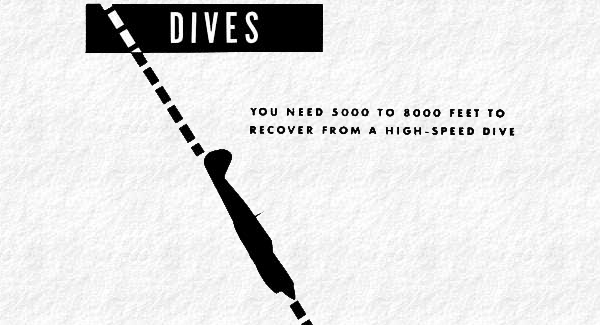|
The P-40 is a great diving airplane.
In dives at maximum allowable speeds it has shown no
tendency to vibrate, flutter or break to pieces. This
doesn't mean that high-speed dives are recommended,
particularly at low altitudes. Remember, you need 5000 to
8000 feet to recover from a high-speed dive. The P-40 is
redlined at 480 mph IAS, but while you are in training
you should not dive at a speed exceeding 350 mph.
When diving, the P40 tends to roll to the right. The
higher the speed of the dive, the greater the tendency to
roll. Compensate by using left rudder pressure and left
rudder trim tab control.
All the P-40's except the M and N models have short
tails and that means greater rudder and elevator loads.
The short- tail models, therefore, require more rudder
and elevator pressure.
|

Pull out of a dive firmly and smoothly. Don't horse back on the stick A sudden jerky pullout may throw the airplane into a high-speed stall. This is especially dangerous close to the ground.
Vertical dives from above 20,000 feet are not
recommended because of the danger of compressibility.
|



